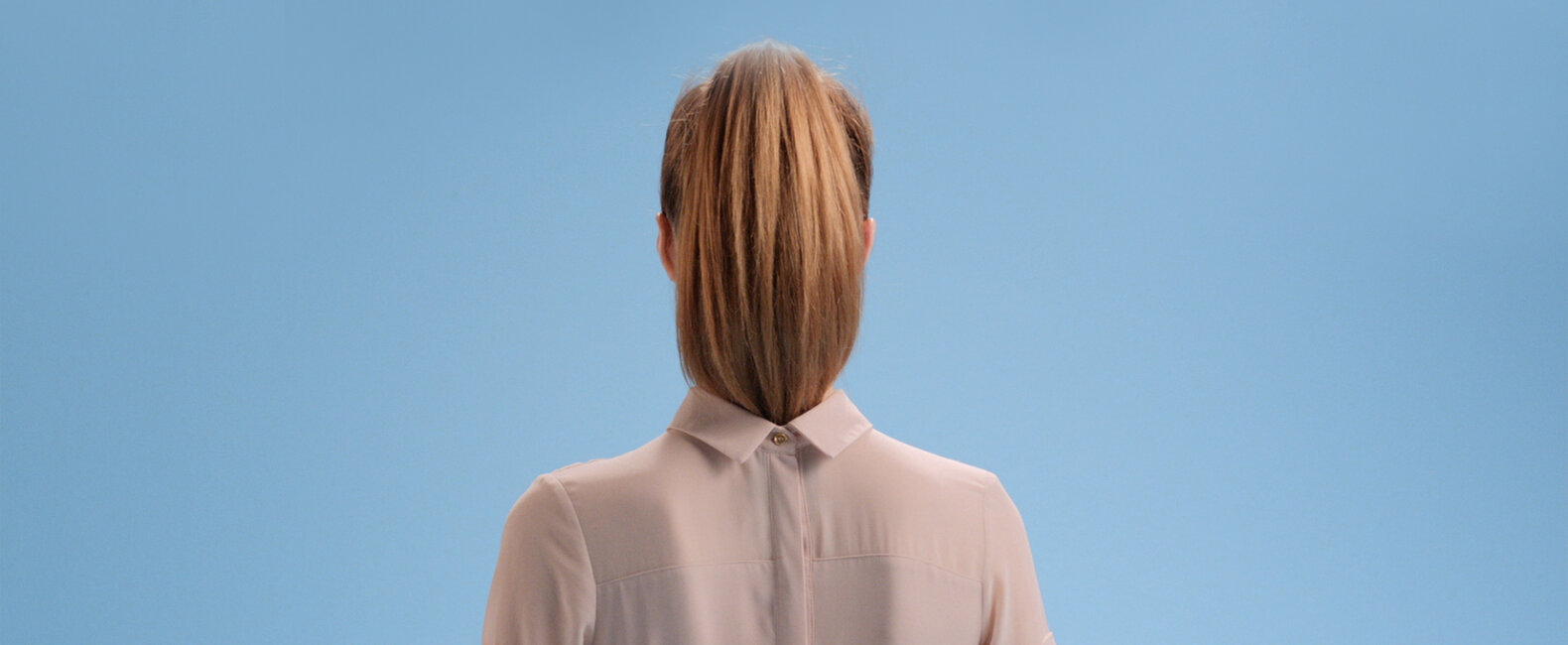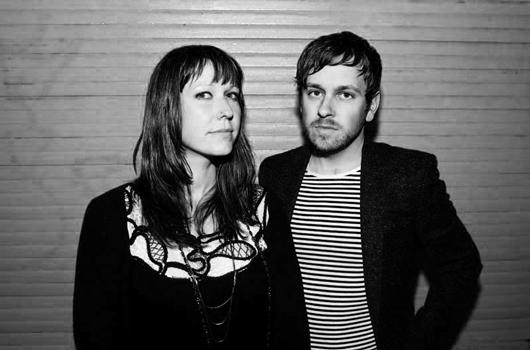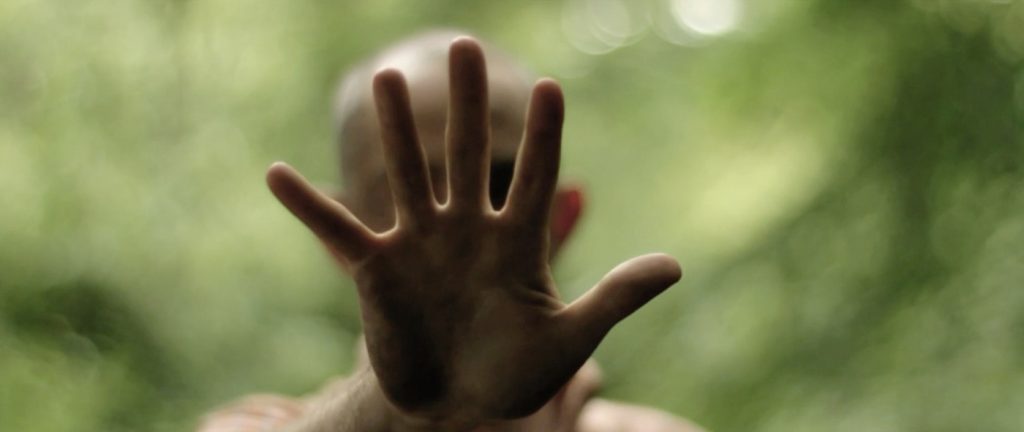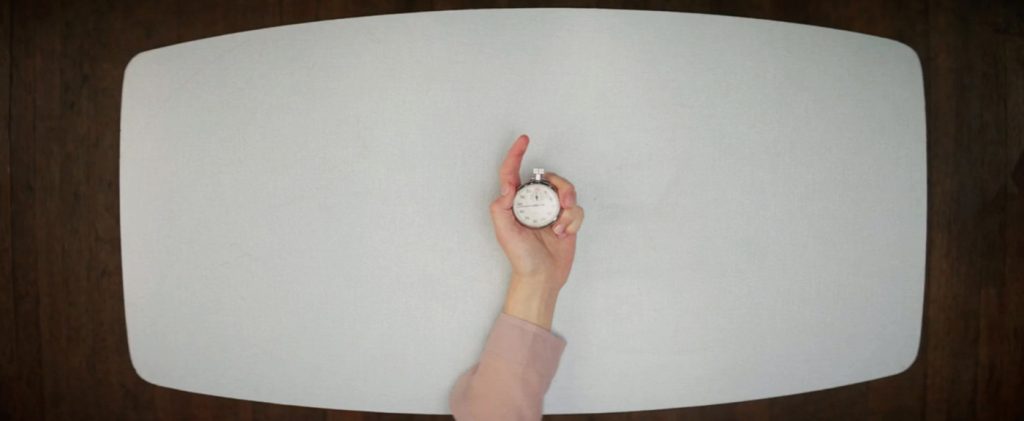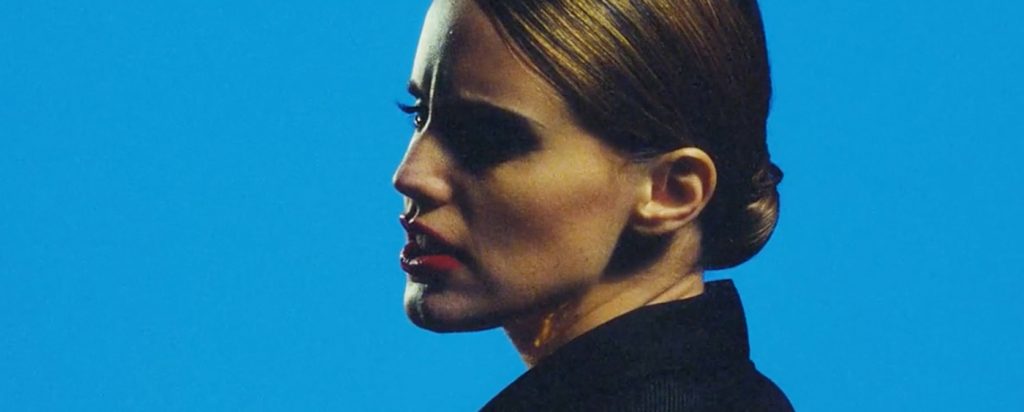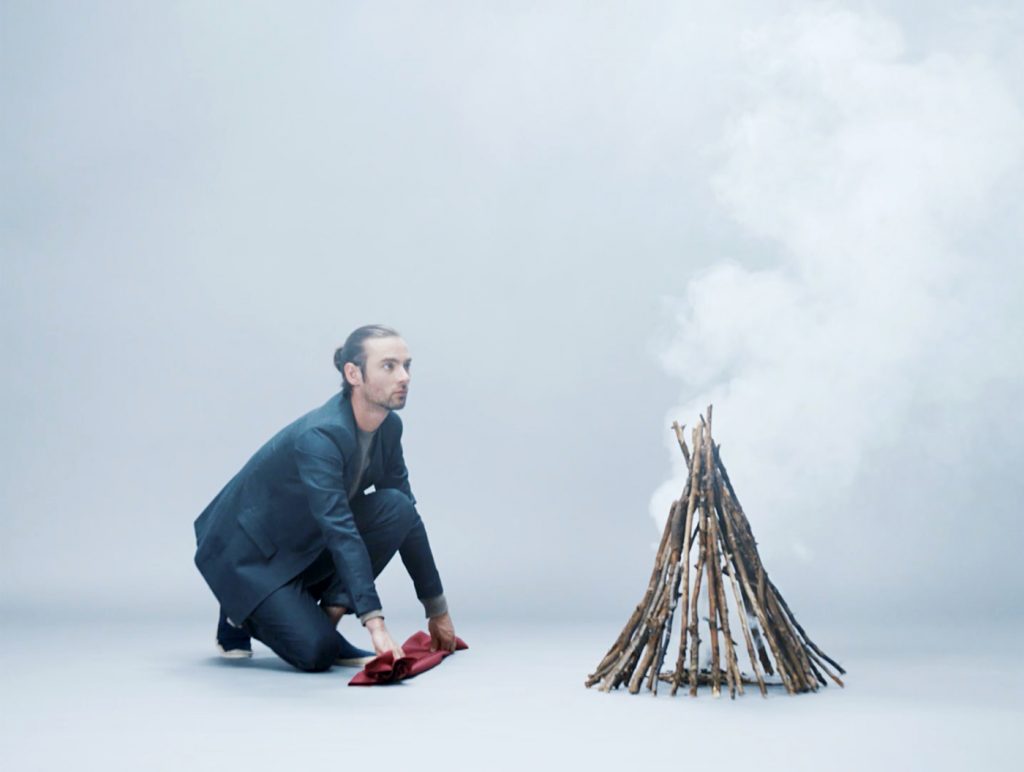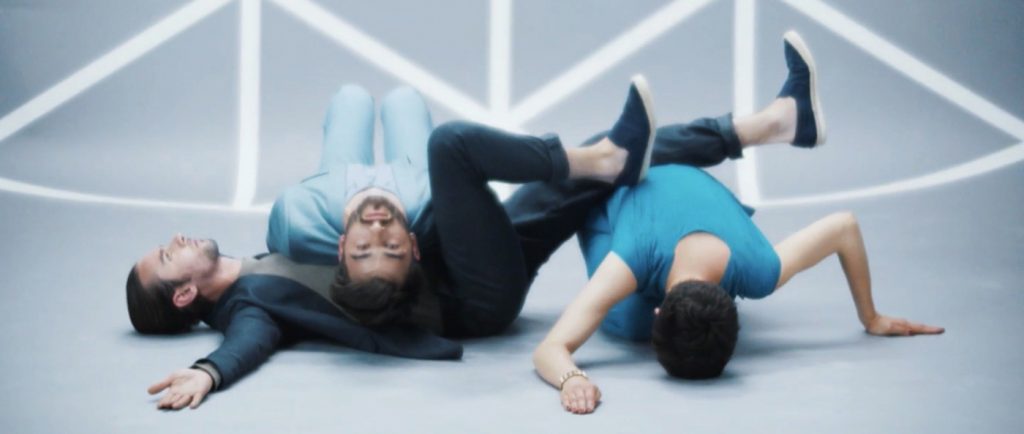Before we started officially recording this interview, Mathy Tremewan and Fran Broadhurst reminisced about their last year of film school in Southampton.
Fran: “I remember sitting in a lecture and the professor asked, ‘Everyone who wants to be a director, put up your hand.’ About 90 percent of the room put up their hands. I was just like, Oh, this is going to be difficult.”
But not long after graduating, Mathy and Fran became not only a couple, but also well-respected music video directors. If you’ve watched any of their videos (and you should), it’s easy to see why. Their work is striking, recognizable, audacious. It makes us uncomfortable in the best of ways. “There’s usually an element of the absurd in everything we do,” Fran told us. “But we always try to keep it quite honest as well.”
We talked to Mathy and Fran about the nuts and bolts of creating music videos, the blessing of short deadlines, and why exactly their work makes us just a little bit uncomfortable. Here’s the charming and brilliant duo, Mathy and Fran.
When did you guys start making music videos? Was that something you sought out?
Mathy: The first video we did was for a band called Diagrams. We got that job through Promo News, which is a blog website for music videos in the U.K.
Fran: We started a really nice relationship with that label and artist. We did a teaser for their album and then three music videos. It was a nice collaborative experience. The budgets were quite small, but that meant we had real freedom to do what we wanted to do.
Could you guys tell right away that you liked making music videos?
Fran: It was harder with those early videos because we had to produce them as well. We were cooking the craft service meals ourselves. They were quite good, actually. The best food we’ve ever had on set. It’s fun looking back on all of that stuff now. It taught us the process from the very start to the very end. Inside out. After you’ve done it yourself, you appreciate what everybody is doing. But yeah, those early projects gave us confidence.
Can you walk me through the process of how a music video comes your way and how it ends up getting created?
Mathy: After we did the Diagrams’ videos, we got a rep. Up until then, it had been one job leading to another, building relationships with record labels, hoping they’d send more work our way. Now that we have a rep, though, the way things generally work is that she’ll get briefs from record labels — sometimes they already have us in mind for the project, or they’re looking to see if anyone out there is a good fit. If our rep thinks it’s right for us, she’ll forward the brief to us, and we’ll put a treatment together based on the brief.
What are these briefs like?
Fran: Sometimes we’ll get briefs that are three pages long with all of these ideas and all of these links to things the artist wants to reference. Really, really detailed. And sometimes we’ll get a paragraph.
Mathy: A sentence.
Fran: “This is how much money we’ve got, and this is what we need.”
Which do you guys prefer?
Fran: That’s an interesting question, actually.
Mathy: It’s very dependent on the track and the artist. It can be helpful to have a lot of insight into what they’re thinking and what they’re going for.
Fran: But sometimes it can be a bit stifling when you have to reference too many things. When you’re trying to fit in too many different ideas. Sometimes you just want to know the basic boundaries: Does the artist want to be in the video? Does he want to be performing in the video? It’s very helpful to know those things in advance, and sometimes it can be hard to get that information from the record labels.
Mathy has a set of rules for himself when it comes to briefs. He listens to the track before he reads the brief.

“Isn’t that what they say about the whole creative process? The best ideas happen when you’re not thinking about them.”
Mathy: Yeah, I always try to listen to the track first. And then, once I’ve formulated a few things in my mind, I find it’s quite helpful to look at the brief and know if I’m going in the right direction.
Fran: I’m the opposite. I like reading the brief and then listening to the track. Then it clicks for me a bit better. The other thing we tend to do is look at the album artwork and the general imagery associated with the artist before thinking or listening to the track.
Do you guys listen to a track nonstop before you make the video?
Mathy: Fran listens to things nonstop.
Fran: I do. I will listen to a song relentlessly — to the point that it drives me mad. To the point where I go to sleep listening to it and wake up listening to it as well. Whereas Mathy will usually listen to a different piece of music while he’s working on a treatment, something completely different.
Wait, really? Why?
Mathy: I tend to listen to other music when I’m writing. I want to step away from the track for a while so I can come back to it fresh.
Fran: Isn’t that what they say about the whole creative process? It’s the moment you stop thinking about something that you get your best idea? I’m probably doing the wrong thing. A lot of times we’ll sit in front of the computer for half a day and not come up with anything. Then we’ll go for a walk down the street and realize, Oh, of course! It was so straightforward! The best ideas happen when you’re not thinking about them.
Do you have a process for coming up with ideas if nothing magical seems to be happening?
Fran: We do. First off, we always start the process separately from each other. We both write a list. A brainstorm of words. When we compare our lists, we usually find two or three things that are the same. We figure that’s where we need to start.
Mathy: Sometimes we’ll think something is clicking, and we’ll indulge an idea for a while. And then we realize it’s not working and go back to that list again.
So what exactly is on these lists? Just a bunch of random words? The first things that come into your head?
Fran: I could probably find the list from the Dan Croll video.
Yeah, find it!
{Mathy starts clicking around on his computer.}
Fran: It’s very different for every project. Our lists…well, our lists can sometimes be quite random. Also potentially quite embarrassing.
Mathy: I found some keywords here. These are from you, Fran. These are the ones you sent to me.
Fran: Read out any of the good ones.
Read them all.
Mathy: The first word you noted was anticipation. Then solitary, revolving, memory, recall, abyss, doors. This is where you started slipping down a black hole, I think. It’s funny — this list kind of gets excited with itself, but in the end it admits its own defeat.
“That’s the hardest part about doing simple things: you have to do them really, really well.”
Fran: It says the word defeat right there.
Mathy: It’s a very random list. But it does come back around. “Every now and then I lose control.” So listing the lyrics helps as well. There are some songs where you feel like there is something in a certain lyric that you want to be really on the nose with, like in the Russ Chimes video. That felt right. Whereas other times the music takes the video in a certain direction.
Can you talk about how the Anna Calvi video concept came about? It’s so simple but so striking. Almost nothing happens.
Fran: Again, we started out with a list of words, and I’d written “Big wheel of color” at some point. Then Mathy went to bed, and about an hour later he burst into the room where I was working and said, “I think I’ve got it!”
Mathy: I was drifting off to sleep when I came up with the idea. We’d been talking about color wheels, and there’s this line in the song about “the color fades” and it felt so—
Fran: Significant.
Mathy: Significant, yeah. We felt like it was the route we had to take. Something about that track suggested color. I didn’t have any imagery in mind, any detail. There’s so much going on musically in that track that it felt wrong to try to crowd it.
Fran: Then we watched videos of Anna performing, and we were like, Oh, well she’s all we need.
Mathy: I had this image in my head of a spectrum of color slowly draining.
Fran: When you’ve got a simple concept like that, though, and the artist is on board, you have to make sure you pull it off as perfectly as possible. That’s the hardest part about doing simple things: you have to do them really, really well. Small mistakes become huge and glaring.
Mathy: With very minimalist ideas like this, it’s all about the details, which sounds ridiculous because there aren’t any details. But that’s actually the most complex and detailed thing about it. The pitch was very easy, and we walked away thinking it was the best thing we’d ever written. Then the challenge was to make it work in a super effective way, which, again, is all about the details. We knew shooting on film was important because we wanted the color to read in a very particular way. We looked into so many different approaches for projecting the color, but in the end we did it all through lights. Everything had to be programmed meticulously. We had it all timed out.
We had a limited amount of film stock when it came to actually shooting, though, and obviously it all had to happen in one take. There was some real anticipation. I think we had 10 takes to get it. It was such an exciting experience. We nearly went with the first take.
Fran: The first take was technically the most perfect, but there was something about take six that had this emotional something in there. We were like, Ah, that’s the one.
Her performance is so amazing. When she puts her head back at the end, there’s something so affecting about that moment.
Fran: She nails it, doesn’t she?
Mathy: We had a screening party with the director of photography and the producer, and we watched all the takes and sort of voted. There were some heated debates going on about take eight, but in the end we went with take six. One day I want to be able to display all of those individual takes.
Fran: We need some gallery to take it on so we can have all 10 takes running at once. A huge room of color.
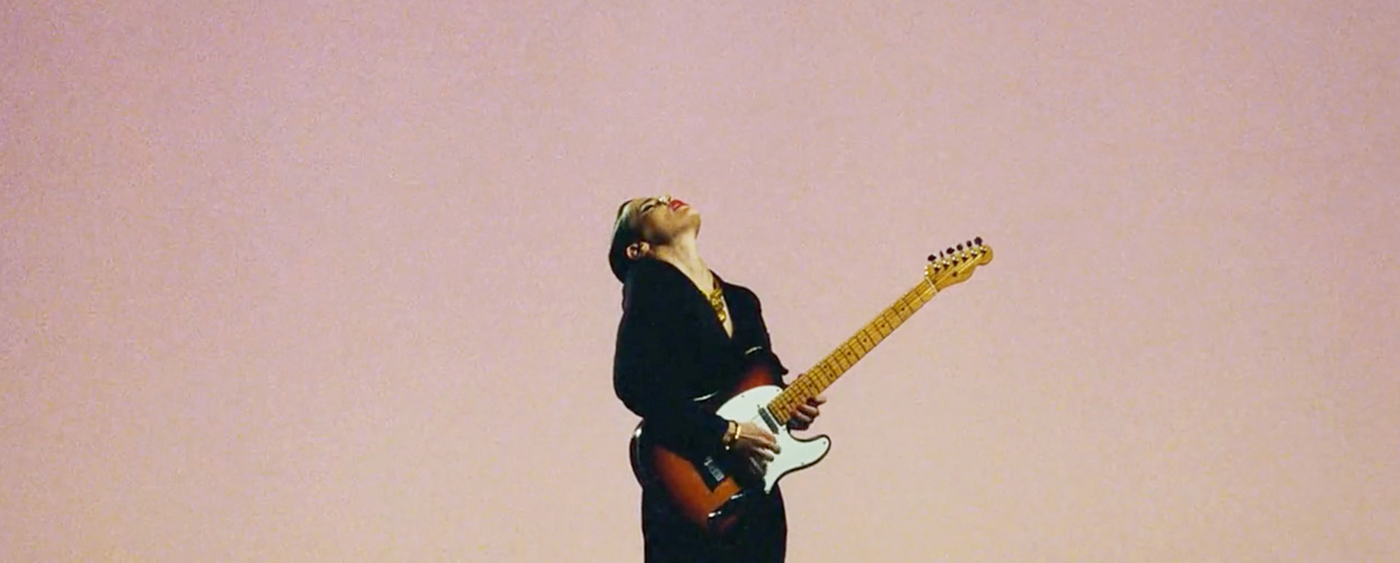
Does it take you guys a long time to come up with your ideas and treatments, or is it pretty quick?
Mathy: Sometimes it’s really quick. Sometimes it’s instant.
Fran: The thing is, you always use the time you have, don’t you? If a brief comes in and they need something the next day, you’ll get it ready. If they need something in a week, you’re like, Oh, I’ll think on that.
But there is something rather nice about having such quick deadlines. You have to be focused. You don’t have time to panic or overcomplicate things. I’m terrible about overthinking things to the point where they lose whatever was special about them in the first place. I can rewrite and rewrite and rewrite. Then I go back to what I had within the first five minutes and it’s way better.
Mathy: It’s a cliché, but it’s always our initial idea that’s the best one.
There’s something about your videos that makes me a bit uncomfortable. And I mean that in the best way possible.
Mathy: {laughing} I know what you mean. With music videos — and sometimes with music in general — there can be a tendency to create something that looks nice, that’s glossy; and sometimes that can end up a bit saccharine. I think in some sense, even with the most poppy of music, there should be something that unnerves you. It should create something strong emotionally. And the visual shouldn’t be just a nice packaging for that; it should do something that really plays off that emotion.
Fran: There’s usually an element of the absurd in everything we do, but we always try to keep it quite honest as well.
What do you mean by honest?
Fran: It’s recognizable, familiar. I hate fantasy. Out of every genre of movies or anything, fantasy stuff just winds me up. I want to see things I know.
Mathy: I think it’s adding a human element to things that are quite cold and absurd. You have to have that.
Can you talk about some of your influences?
Fran: We find influence questions really difficult to answer. There are tons. We tend to use photographers more frequently than filmmakers in terms of referencing work.
“There’s usually an element of the absurd in everything we do, but we always try to keep it quite honest as well.”
Mathy: Jeff Wall is a big influence. Ryan McGinley. Filmmakers like Harmony Korine and Gus Van Sant who can distill a lot within a moment, within a single image. They can tackle a lot of narrative in a short space of time without feeling like they’re cramming it all in. Allowing a simple image to speak for itself, have a story within it.
Fran: We’re looking at imagery all day. It’s everywhere. It’s relentless.
Mathy: So often you’ll write something and then see another video that comes out within weeks that has the same parts as your treatment. This is the way it seems to work now. I guess everyone is consuming the same things. All those things that are subliminally influencing you are subliminally influencing someone else.
I’ve heard that two guys filed patents for the television within hours of each other. In different parts of the country.
Fran: I can believe it, yes.
Does it bother you to realize that an idea might not have been so original?
Mathy: As long as you’re bringing what is personal to you to an idea, that’s all that matters. All we have is what we bring. It doesn’t worry me too much.
Fran: The only time it bothers us is when we can’t do the idea ourselves.
Big thanks to Mathy and Fran for taking the time to chat with us and letting us in on their thoughts and process. We couldn’t agree more about the strange inspiration that comes from short deadlines, and we love the technique they came up with for generating new ideas. It’s clearly working well for them. Might have to give that one a try ourselves.















































































